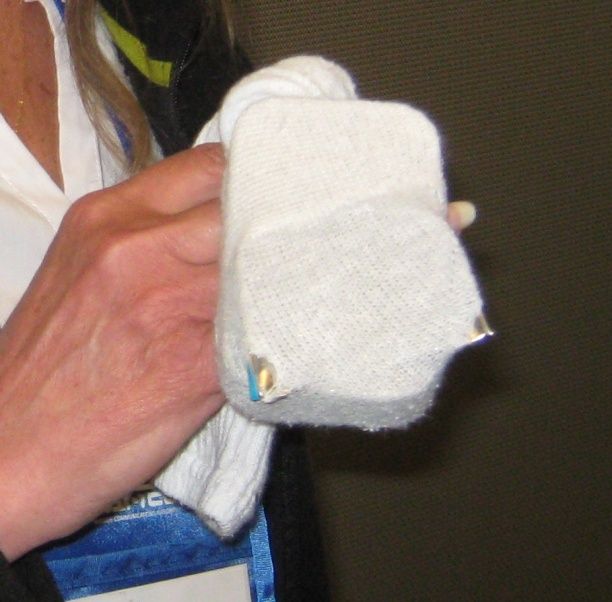At the beginning of one part of the presentation, I said, “Welcome to weapons making 101. The chief goal of this is for corrections professionals to learn how easy it is to produce a weapon. This is done to increase safety. This is not intended to help offenders become better weapons makers.”
Recently, I attended the 32nd annual American Jail Association conference in Grand Rapids, Michigan. I was the presenter at an early morning session called “Breaking Ice and Engaging Minds.” I addressed how engaging classroom exercises can benefit corrections training. Also, I demonstrated five corrections-oriented classroom exercises that I developed for the International Association of Correctional Training Personnel.
One of these exercises was called “Care for a mint?” This is my favorite exercise of all time. It has been performed in various corrections venues over the years. I field tested it on Criminal Justice students and have found success each time I facilitate the memorable exercise.
It is pretty simple. All that is needed is:
- A scenario about a careless staff member who leaves a mint container made of flexible metal on his desk
- A sock for each team
- A metal container for each team
- Time for the team to make a weapon
I told participants to make a weapon from the materials provided. With corrections staff, little instruction is needed, as they are familiar with the variety of weapons in our facilities. With college students, I have to give more direction.

(One team created a modified mace with sharp edges.)
I solicited three team captains who selected two other team members each. These three teams of three worked quietly in different corners as I demonstrated different exercises to the other participants. I learned two useful tidbits as the exercise unfolded.
- Resourcefulness – The group at the front corner of the class consulted with seated participants while I presented. They were quiet. I did not initially forbid any team from seeking help, thus I allowed it. During the post mortem, we discussed how actual inmates could use others for assistance and advice. This reinforces the lesson that we should not overlook resourcefulness when solving problems. It also points up the basic resourcefulness of inmates.
- Simplicity – Each time I facilitated this exercise, participants have made a cutting or stabbing instrument of some sort. Some have been very elaborate and sharp. Others looked dangerous, but were actually dull. Still, while in motion, they looked like credible weapons. The point is: cutters and stickers are the norm.
However, in this rendering, I noted that the participants seemed to complete the task quicker than most groups. In all, there was only one small cutter produced. Each of the three groups weighted the sock with the metal box of mints. One group demonstrated quick simplicity by using the sock as a garrote.
(In this image, the victim is over a foot taller than the aggressor,
demonstrating that size does not always matter when there is an element of surprise.)
No matter how many times I conduct this exercise there is always a new wrinkle. These corrections professionals at the 2013 American Jail Association conference reminded all of us that a contraband trick does not have to be elaborate in order to work well. Corrections staff who realize this and minimize weapons making opportunities contribute to the overall safety of the profession.
With sincere appreciation, I thank participants at AJA for helping me learn the nuances of contraband.













